How to Read Csv Files in Jupyter Notebook Without Panda
Live Graph Simulation using Python, Matplotlib and Pandas
Make live graphs with dynamic line, scatter and bar plots. Also learn to plot graphs in 3D and 2nd quickly using pandas and csv.

Pandas and Matplotlib are very useful libraries when information technology comes to graph plotting and circulation. Often it becomes quite time consuming when you have collected chunks of data but have to separately search for plotting tools to visualize your data. Pandas, coupled with matplotlib offers seamless visualization of data directly from csv files.
In this post we will learn how to plot diverse plots direct from csv files and then later how to present the data in a live moving and dynamic graph. Further equally a bonus, plotting the data in 3D shall also be described.

Plot direct from CSV files:
Let united states brainstorm with the basics which is past plotting unlike types of plots direct from csv files.
import pandas as pd
import matplotlib.pyplot every bit plt We import the two essential packages required for the plots. For the purpose of demonstration we shall be using the csv file available hither : Link . We shall use sales records every bit it it more data centric. (CSV file)
med_path = "D:/FL_insurance_sample.csv/SalesJan2009.csv"
med = pd.read_csv(med_path)
sales = pd.DataFrame(med)
sales We ascertain the path of the csv file and and so using pandas read the file. Next we convert it to a pandas dataframe which makes easier to play with data. Then we visualize to see what data are we dealing with which looks something like this:

Adjacent step is to plot the data. We start with a line chart with the following snippet:
ax =plt.gca()
sales.plot(kind='line',y = 'Latitude',ax=ax,color='red')
ax.set_xlabel("Index values")
ax.set_ylabel("Latitude values")
plt.title('Demo graph for Line plots')
plt.show() plt.subplots(dpi=120) gives the figure and axes for the plots while dpi helps usa decide the quality of the graph image. We describe the type of graph in kind variable so subsequently set 10 and y labels along with the plot title. Nosotros have the following output:

We tin can plot multiple entities by just adding more plot values along with legends for the same every bit shown below:
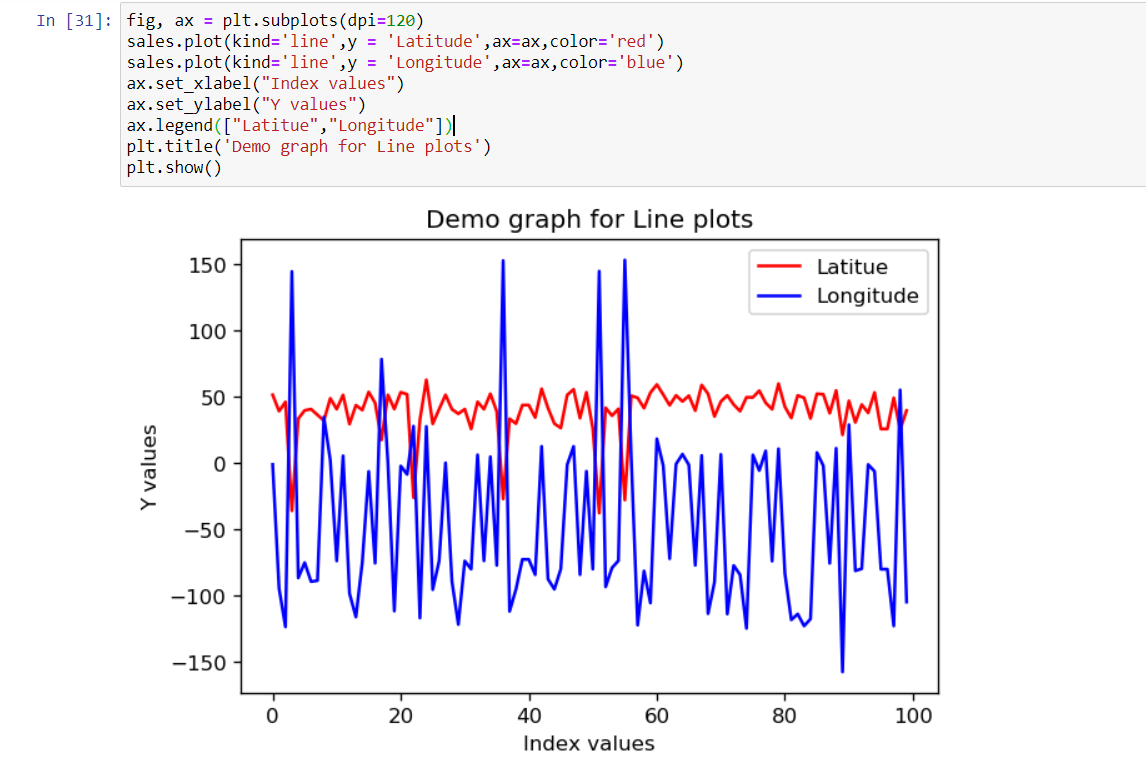
Similarly nosotros also visualize scatter plot-single plot using the post-obit snippet:
fig, ax = plt.subplots(dpi=120)
sales.plot.scatter(y='Country', 10='Payment_Type', color='cerise', ax=ax);
ax.set_xlabel("Card types")
ax.set_ylabel("Countries")
plt.championship('Demo graph for Scatter plot')
plt.show() 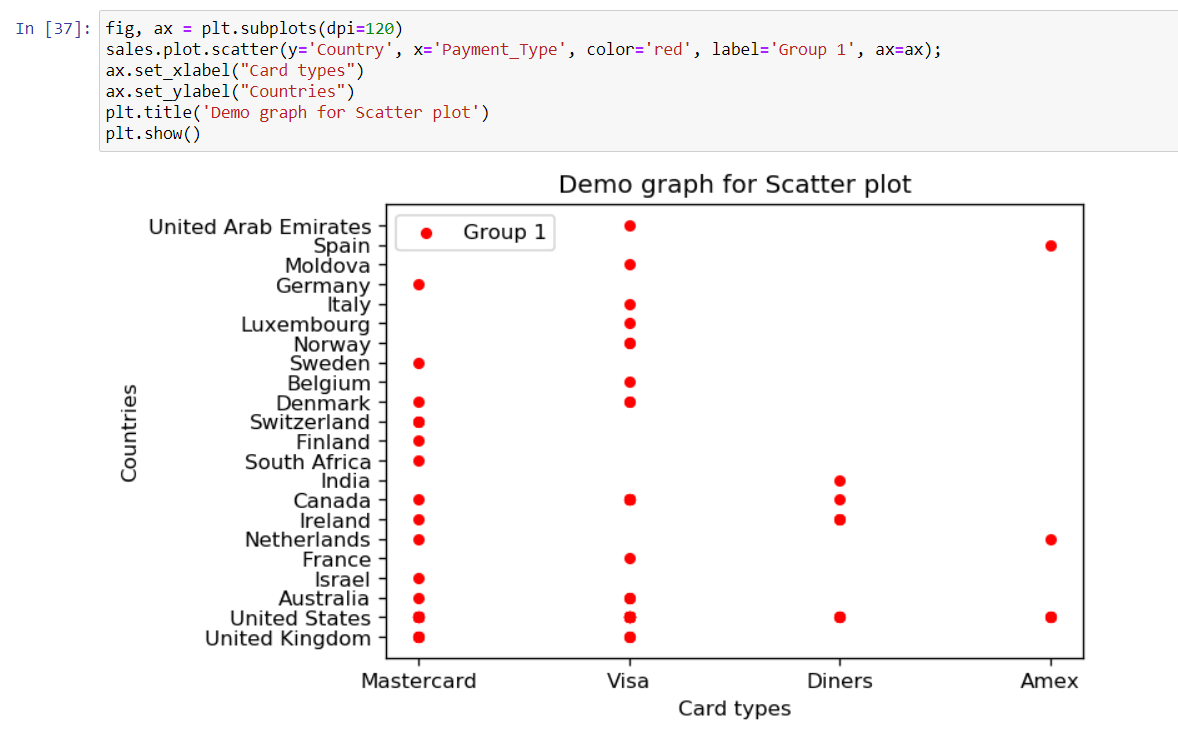
We and then extend for multi scatter plot in the same figure as follows:

The data file chosen isn't very suitable for some types of plots so we use random values for better visualization for those types of plots.
Bar Plots:
fig, ax = plt.subplots(dpi=120)
random_values = pd.DataFrame(np.random.rand(10, 4), columns=['a', 'b', 'c', 'd'])
random_values.plot(kind='bar',ax=ax)
ax.set_xlabel("Colums")
ax.set_ylabel("Data values")
plt.title('Demo graph for Bar plot')
plt.evidence() 
Area Plot:
fig, ax = plt.subplots(dpi=120)
expanse = pd.DataFrame(np.random.rand(10, 4), columns=['a', 'b', 'c', 'd'])
surface area.plot(kind='area',ax=ax)
plt.title('Demo graph for Expanse plot')
plt.evidence() 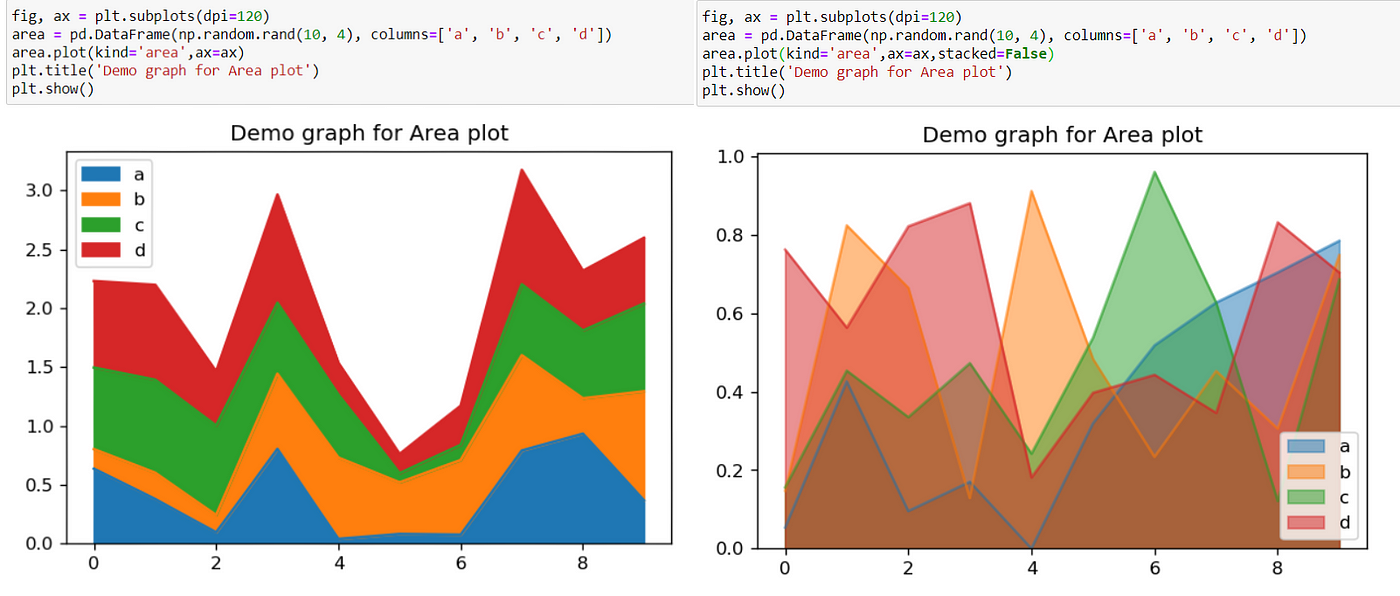
These were some of the most ordinarily used plots for data visualization. Now nosotros move on to plotting these plots every bit live and dynamic data

Alive — Dynamic Graphs:
We will be using FuncAnimation function in matplotlib for this purpose which makes blitheness by repeatedly calling a function *func*.
We ascertain the necessary imports and initializations necessary for the code execution here:
import random
from itertools import count
import fourth dimension
import matplotlib.pyplot as plt
from matplotlib.blitheness import FuncAnimation
from mpl_toolkits import mplot3d plt.style.use('fivethirtyeight') x_values = []
y_values = []
z_values = []
q_values = [] counter = 0 index = count()
We shall be plotting three dynamic line plots in the same figure and will randomly pool these values from a specified range
Firstly nosotros define the *func* role to be utilized here:
The comments in the code make it relatively easier to understand the concept that animate function keeps calling the part defined by us and plt.cla keeps refreshing the plot which makes information technology dynamic. Finally nosotros telephone call the above function to see the dynamic graphs-
fig, ax = plt.subplots()
ani = FuncAnimation(plt.gcf(), animate, 1000)
plt.tight_layout()
plt.show() At present we shall run into how it actually looks when we run the code->
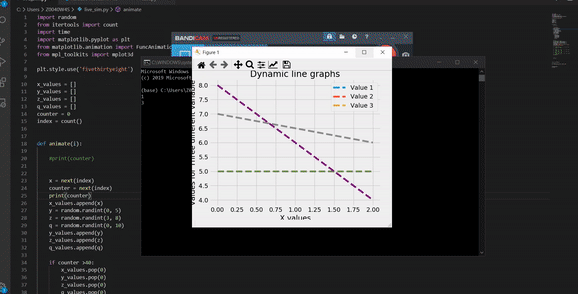
Note — The breathing part is a memory less part hence will not perform operations like counter = counter+1
Simply utilise different plot types as mentioned earlier to create live-scatter/bar/area graphs

Decision:
Hence in this postal service we learned how to lawmaking multiple types of plots using pandas and matplotlib. We learned how to read from csv file, convert them into pandas' information-frames and plot respective graphs inside a single line of code. In improver to all we also learned to code dynamic and moving graphs and are now set up to brand dazzling presentation and beautiful data visualizations. Most importantly we learned the flexibility available inside pandas and matplolib when it comes to data visualization.
Bonus Section:
In the bonus section we volition breifly go over how to create 3D plots. We will plot the same line and scatter plots that nosotros plotted earlier only in 3D.
Nosotros merely add i additional import :
from mpl_toolkits.mplot3d import Axes3D which is for importing matplotlib for 3D projections.
First we shall directly plot the previous graphs without any add-on of z-axis exclusively and the results would be:
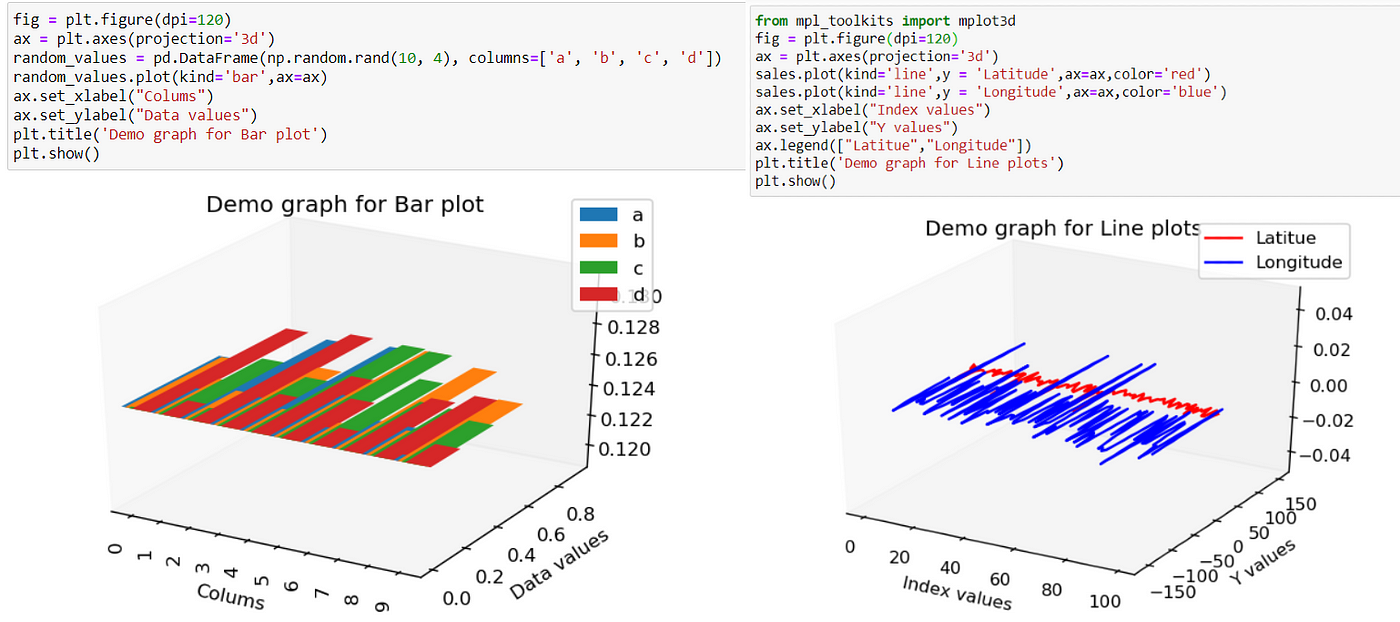
Now we shall add together some racket/random values as the third dimension to add depth in the data visualization part ->
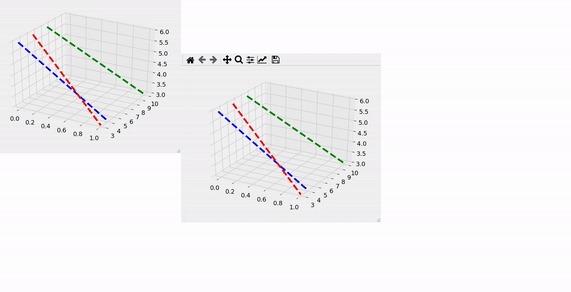
Code is relatively unproblematic and piece of cake to understand as shown below:
Viola we take done this which too marks the end of this weblog mail service.
Source: https://medium.com/intel-student-ambassadors/live-graph-simulation-using-python-matplotlib-and-pandas-30ea4e50f883
0 Response to "How to Read Csv Files in Jupyter Notebook Without Panda"
Post a Comment